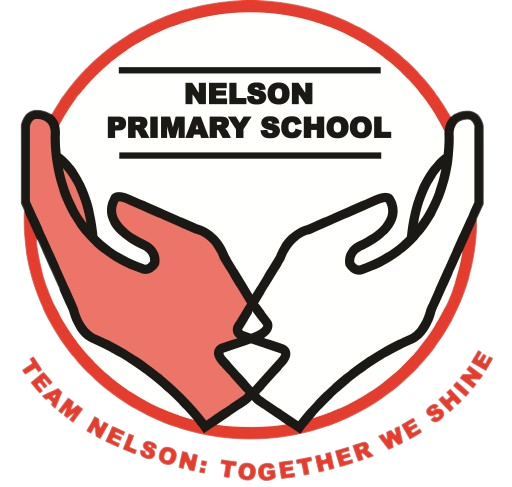Teaching of Early Reading: Phonics
 At Nelson Primary School we believe that all our children can become fluent readers and writers. This is why we teach reading through Little Wandle Letters and Sounds Revised, which is a systematic and synthetic phonics programme.
At Nelson Primary School we believe that all our children can become fluent readers and writers. This is why we teach reading through Little Wandle Letters and Sounds Revised, which is a systematic and synthetic phonics programme.
We start teaching phonics in Nursery/Reception and follow the Little Wandle Letters and Sounds Revised progression, which ensures children build on their growing knowledge of the alphabetic code, mastering phonics to read and spell as they move through school.
We teach phonics for 20 minutes a day. In Reception, we build from 10-minute lessons, with additional daily oral blending games, to the full-length lesson as quickly as possible.
Each Friday, we review the week’s teaching to help children become fluent readers. Children make a strong start in Reception: teaching begins in Week 2 of the Autumn term. Children in Reception are taught to read and spell words using Phase 2 and 3 GPCs, and words with adjacent consonants (Phase 4) with fluency and accuracy. Children in Year 1 review Phase 3 and 4 and are taught to read and spell words using Phase 5 GPCs with fluency and accuracy.
As a result, all our children are able to tackle any unfamiliar words as they read. At Nelson Primary School, we also model the application of the alphabetic code through phonics in shared reading and writing, both inside and outside the phonics lesson and across the curriculum. We have a strong focus on language development for our children because we know that speaking and listening are crucial skills for reading and writing in all subjects.
Home Reading
 Although your child will be taught to read at school, reading at home is just as important! In EYFS and KS1, for those children who still require phased phonics books, we use both ‘Big Cat’ and ‘Bug Club’ books as home reading books. There are two types of reading book that your child may bring home: 1. A reading practice book. This will be at a phonics phase that your child is secure at. This is to encourage them to feel confident with their reading and understand the stories given to them.
Although your child will be taught to read at school, reading at home is just as important! In EYFS and KS1, for those children who still require phased phonics books, we use both ‘Big Cat’ and ‘Bug Club’ books as home reading books. There are two types of reading book that your child may bring home: 1. A reading practice book. This will be at a phonics phase that your child is secure at. This is to encourage them to feel confident with their reading and understand the stories given to them.
Please don’t worry if they need help, you can encourage them by asking them to sound the word out. 2. A class library book. Your child will not be able to read this on their own. This book is to be shared together and enjoyed – discuss the pictures, enjoy the story, predict what might happen next, use different voices for the characters, explore the facts in a non-fiction book. The main thing is that you have fun, so get cosy and get lost in a book together! We have included a list of questions you can explore with the children after reading with them.

